|
|
| |
UNITED KINGDOM
LIVERPOOL
Liverpool is a fantastic city break destination whenever you choose to visit. Historically a part of Lancashire, the urbanisation and expansion of Liverpool were both largely brought about by the city's status as a major port. By the early 19th century, 40% of the world's trade passed through Liverpool's docks, contributing to Liverpool's rise as a major city. The popularity of The Beatles, Gerry and the Pacemakers and the other groups from the Merseybeat era contributes to Liverpool's status as a tourist destination; tourism forms a significant part of the city's modern economy. The city celebrated its 800th anniversary in 2007, and it held the European Capital of Culture title together with Stavanger, Norway, in 2008. Several areas of the city centre were granted World Heritage Site status by UNESCO in 2004. Liverpool is also the home of two Premier League football clubs, Liverpool F.C. and Everton F.C.. There are a number of ways of getting around the local area, from the various train and bus routes heading into the city and around the local area to the historical Mersey Ferries which still carry both tourists and commuters across the river today.
 Liverpool Lime Street railway station
Photograph © Neil T
 Albert Dock at night
Photograph © Arthurv
Albert Dock
The Albert Dock is a complex of dock buildings and warehouses in Liverpool. It was the first structure in Britain to be built from cast iron, brick and stone, with no structural wood. As a result, it was the first non-combustible warehouse system in the world. At the time of its construction the Albert Dock was considered a revolutionary docking system because ships were loaded and unloaded directly from/to the warehouses. Due to its open yet secure design, the Albert Dock became a popular store for valuable cargoes such as brandy, cotton, tea, silk, tobacco, ivory and sugar. During the Second World War, the Albert Dock was requisitioned by the Admiralty serving as a base for boats of the British Atlantic Fleet. Today the Albert Dock is a major tourist attraction in the city and the most visited multi-use attraction in the United Kingdom. It is a vital component of Liverpool's UNESCO designated World Heritage Maritime Mercantile City and the docking complex and warehouses also comprise the largest single collection of Grade I listed buildings anywhere in the UK. It is the number one tourist attraction in Liverpool. Amongst the many attractions at the Albert Dock are the Merseyside Maritime Museum, the Beatles Story and the Tate Liverpool. There are also two hotels within the Albert Dock: a Holiday Inn and Premier Lodge both located in the Britannia Pavilion.
 World Museum and City Library
Photograph © Jonathan Oldenbuck
William Brown Street in Liverpool, England is a road that is remarkable for its concentration of public buildings. It is sometimes referred to as the "Cultural Quarter" of Liverpool. Originally known as Shaw's Brow, a coaching road east from the city, it is named after William Brown, a local MP and philanthropist, who in 1860 donated land in the area for the building of a library and museum. Here you will can find The William Brown Library and Museum The building currently houses part of the World Museum Liverpool and Liverpool Central Library. You will also be able to see the Walker Art Gallery on William Brown Street. It houses one of the largest art collections in England, outside of London. The Walker Art Gallery houses a collection including Italian and Netherlandish paintings from 1300–1550, European art from 1550–1900, including works by Rembrandt, Poussin and Degas, 18th and 19th century British art, including a major collection of Victorian painting and many Pre-Raphaelite works, a wide collection of prints, drawings and watercolours, 20th century works by artists such as Lucian Freud, David Hockney and Gilbert and George and a major sculpture collection.
Pier Head
The Pier Head is a riverside location in the city centre of Liverpool. It is part of the Liverpool Maritime Mercantile City UNESCO World Heritage Site. The historic site encompasses a trio of landmarks, built on the site of the former George's Dock. This includes the Royal Liver Building. It is a grade I listed building consisting of two clock towers, both crowned by mythical Liver Birds. The building is the headquarters of the Royal Liver Friendly Society. The Cunard Building which is now the former headquarters of the Cunard Line shipping company and the Port of Liverpool Building which is now the former home of the Mersey Docks and Harbour Board. Also on the site is the grade II listed Mersey Tunnel building.
The Mersey Ferries operate from George's Landing Stage, owned by the Mersey Docks and Harbour Company. Ferries travel to Woodside in Birkenhead and Seacombe in Wallasey. The Isle of Man Steam Packet ferry service also operates from Princes Landing Stage, at a berth adjacent to the those used by the Mersey Ferries.

Liverpool Pier Head, with the Royal Liver Building,
Cunard Building and Port of Liverpool Building
Photograph © Chowells
Liverpool ONE is a shopping, residential and leisure complex in Liverpool. It is a retail led development, anchored by department stores Debenhams and John Lewis, with additional elements including leisure facilities (anchored by a 14-screen Odeon cinema and 36-hole adventure golf centre), apartments, offices, public open space and transport improvements. Liverpool ONE is the largest open air shopping centre in the United Kingdom and the 10th largest overall. Liverpool ONE consists of six distinct districts, mixing retail, leisure and accommodation. Jungle Rumble is an indoor adventure golf centre that opened in Liverpool ONE in December 2010. The attraction includes two 18-hole courses, a state of the art golf simulator as well as a bar and cafe. Liverpool ONE is home to two large hotels, the Hilton Liverpool is a 215 room hotel located at Chavasse Park. It is one of three Hilton hotels in Liverpool and also contains numerous conference rooms, the Exchange Restaurant and the Prima Cocktail Bar. The 12-storey Novotel on Hanover Street was built between 2007 and 2009 it contains 209 rooms, a gym, swimming pool and the Elements Restaurant and Bar. Liverpool ONE also includes a bus station and a multi-storey car park at the edge of the main shopping district.

Liverpool One at Night
Photograph ©
IrateComedy in Liverpool
Comedy nights are featured on Friday and Saturday at Baby Blue, a nice club on the exclusive Albert Dock, which is known as a celebrity hotspot. Also for laughs, try Rawhide at the Royal Court Theater which showcases some of the best in regional and national comedy talent. Every June or July there is a fortnight long *Liverpool Comedy Festival which takes place in venues across the city. One event not to be missed is the now legendary Drink up Stand up pub crawls. On the first Tuesday of the month the Fab Café on Hope Street hosts a comedy night with two or three local comics plus a compere.
Mathew Street
Mathew Street is a street in Liverpool, England, best-known worldwide as the location of the Cavern Club, where The Beatles played on numerous occasions in their early career. The street connects Rainford Gardens (off Whitechapel) to North John Street, and is located in an area of the city centre known today as "The Cavern Quarter". Historically it was the centre of Liverpool's wholesale fruit and vegetable market. Mathew Street is visited by thousands of tourists a year, who visit the Cavern Club and many surrounding attractions including a statue of John Lennon, a Beatles store and several pubs formerly frequented by The Beatles. A wall in Mathew Street is adorned by a sculpture by Arthur Dooley entitled "Four Lads Who Shook the World". Today, Mathew Street is one of Liverpool's most popular nightlife destinations. It is also the centre of the Mathew Street Festival, which fills the streets of Liverpool every Summer. The event attracts thousands of visitors and acts from all over the world and hosts many bands, both local and from around the world, including many Beatles tribute bands. 2010 saw approximately 100,000 music fans visit Liverpool to celebrate the festival's 18th birthday. Six outdoor stages played host to a number of tribute acts, covering songs by The Beatles, Blondie and David Bowie.
 Anfield, home of Liverpool F.C.
Photograph ©
Ben Sutherland
Liverpool Football Club is an English Premier League football club based in Liverpool. Liverpool has won eighteen League titles, second most in English football, seven FA Cups and a record seven League Cups. Liverpool has won more European titles than any other English club, with five European Cups, three UEFA Cups and three UEFA Super Cups. Their fans are famous the world over for the unique atmosphere they create at Anfield and the singing of 'You'll Never Walk Alone' on matchdays. They have a very heated rivalry with Manchester United FC, considered by most football fans to be the biggest rivalry in all of England; a rivalry which stems from the traditional city rivalry between Manchester and Liverpool since the Industrial Revolution, and further fuelled by the fact that both clubs are the most successful English clubs in European and domestic competition. Anfield was built in 1884 on land adjacent to Stanley Park. The capacity of the stadium at the time was 20,000, although only 100 spectators attended Liverpool's first match at Anfield.
 The Philharmonic Hall
Photograph © OosoomRoyal Liverpool Philharmonic Orchestra
The Royal Liverpool Philharmonic Orchestra, is the country's longest surviving professional orchestra. It is involved in educational and community projects in Liverpool and its surrounding region. The society and its members have been successful in winning a number of honours and awards and played an important role when Liverpool was the European Capital of Culture in 2008. It is based in the Philharmonic Hall, an art deco concert hall built in the late 1930s. Each year the Royal Liverpool Philharmonic Society more than 60 concerts of classical music played by the orchestra. A series of Family Concerts is arranged on Sunday afternoons, aimed mainly at children aged 4–10. The society also organises workshops for children. It arranges other events in the hall, including performances of jazz and pop music, and comedy shows. Films are shown on the Walturdaw screen. The society also arranges concerts in the Small Concert Room of St George's Hall.
Guided Tours
For those in a hurry there are a number of operators offering guided tours, either using their own transportation or offering their services as "hop-on, hop-off Guides" on your coach or offering guided walks. The best way of getting an overview of the city, is by taking the City Explorer open-top bus run by Maghull Coaches. With 12 stops you can hop on and off all day. Qualified local guides provide the commentary and can answer your questions about the city. For Beatles fans, there is the Magical Mystery Tour which will take you around the places associated with the Beatles both in the city centre and in the suburbs. For a more tailored tour, there's Liverpool Entente Cordiale Tours. Their Liverpool tour guides can plan a walk for you or hop on your coach and guide you around the city. They offer tours in English or French. The Beatles Fab Four Taxi Tour offer unique personal tours that take you back in time to the childhood homes of the Fab Four.
|
|
|
Events
Bonfire Night
5 November
On 5th November 1605, soldiers discovered a man called Guy Fawkes in a cellar under the Houses of Parliament. With him were at least twenty barrels of gunpowder. Guy Fawkes was arrested and tortured. At last he gave way and told his torturers about a plot to blow up Parliament together with the king, James I, his ministers and Members of Parliament.
In 1606 Parliament agreed to make 5th November a day of public thanksgiving and ever since then the day has been celebrated with fireworks and bonfires.
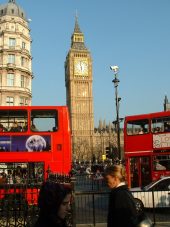
The Clock Tower
Photo: PKG
Chelsea Flower Show
May
Chelsea Flower Show is the world's most popular and renowned flower show. The best in gardening and horticulture is brought together in one place for one week in May.
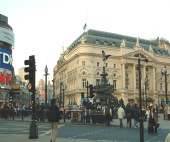 Piccadilly Circus
Photo: PKG
Edinburgh International Festival
August
Each year the Edinburgh International Festival stages one of the greatest celebrations of the arts, attracting audiences from around the world to the city's thrilling atmosphere. The festivities offer a unique opportunity to experience the excitement of live performance by internationally renowned artists as well as the joy of discovering new and unfamiliar works.
 St. James Park
Photo: PKG
Henley Royal Regatta
June
Henley Regatta was first held in 1839. Originally staged by the Mayor and people of Henley as a public attraction with a fair and other amusements, the emphasis rapidly changed so that competitive amateur rowing became its main purpose.
 Horse Guards Parade
Photo: PKG
London Film Festival
November
With a host of gala screenings, special events, The Guardian Interviews, and UK, European and World Premieres, the British Film Institute's London Film Festival is the leading non-competitive event in the international cinema calendar.
 Kenwood House
Photo: PKG
London International Boat Show
January
The London Boat Show is a glittering affair, with all the best in boating on display. London's Earls Court houses the international boat show with all the latest in boats, equipment, watersports and holidays.
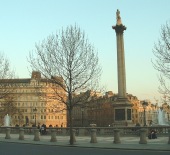 Trafalgar Square
Photo: PKG
London Marathon
April
Aside from being a natural arena for competitiveness and human achievement, the London Marathon is a huge asset to thousands of charities who enter athletes in the hope of raising money, usually on a sponsorship basis.
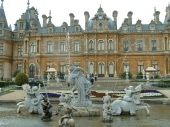 Waddesdon Manor
Photo: PKG
Notting Hill Carnival
August
Every August Bank Holiday the Notting Hill Carnival brings London alive. The festival began as West Indian immigrants moved into the area during the fifties and is now one of the best carnivals in the UK attracting over a million people each year. The first carnival was in 1964, and grew up from the struggle between the black West Indian community and the police. Today the carnival celebrates the diverse cultures which make up Britain's identity.
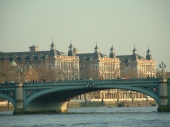 Westminster Bridge
Photo: PKG
Royal Welsh Show
July
This is the flagship show for WCC members. Held in the South Glamorgan Hall, which is situated close to some of the main entrances to the showground, it is also near to the livestock and show rings which attract many thousands of visitors.
 London
Photo: PKG
Southampton International Boat Show
September
The biggest and best of the season's boats is on display, as well as the latest in sailing wear, equipment and great holiday offers.
 Green Park
Photo: PKG
State Opening of Parliament
November
The Queen formally opens the new session of Parliament each year. Accompanied by the Duke of Edinburgh she travels in the State Coach to the Palace of Westminster. Before the royal procession sets out, a detachment of the Yeomen of the Guard (dating from 1485, they are the oldest of the royal bodyguards) search the cellars of the Houses of Parliament. This tradition dates back to the Gunpowder Plot of 1605, when Guy Fawkes was arrested whilst preparing to blow up Parliament. Today the Yeomen are reinforced by police in their search.
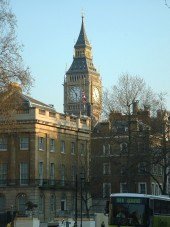 The Clock Tower
Photo: PKG
|

